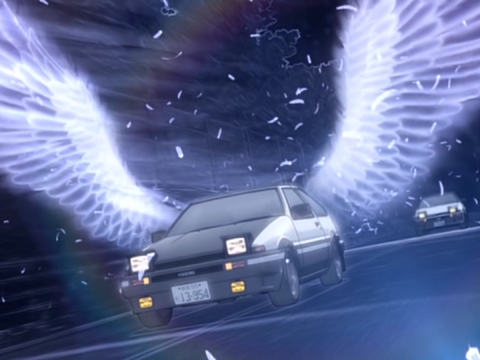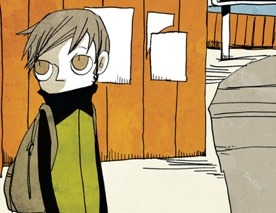
So I don’t often cover licensed manga or even properties with media tie-ins for this publication. I’m not opposed to sharing my thoughts on popular titles, but other people might do a better job of that. Besides the magazine would fail you all as an otaku journal if we simply just stuck with the properties you are already familiar with and love. Shocking you, inspiring you and informing you to the point where you want to hunt down some lesser-known titles is what this column is about. I just will not be doing that this week…
When mainstream manga gets weird, why not share it with the masses? And weird in this case is a political drama manga featuring ballet dancing mecha! No, we are not reviewing the G Gundam manga (I don’t think one exists, though I’d love to read one). Today we are looking at Kasahara Tetsuro’s RideBack.
 It’s the year 2020 and students across the globe are on the move. United en masse around the globe to stand up against a new world order, the youth in this manga are demonstrating against the United Nations new Borderless Military Alliance in the not too distant future. With a world that is ever shrinking through technology, governments have conspired to change the very basis of independent nations they represent. The world of the future will become increasingly borderless, and to “defend the peace” in this new world the Alliance members have stepped up their defense forces by building a Global Government Force. Even on the local front, beefed up regional police departments can cast a wider net using new powers to maintain the status quo (in the favor of the GGF, of course). And now in the far reaches of the Tokyo Metropolitan District college demonstrators looking for independence and liberty will collide face to face with a global peace force.
It’s the year 2020 and students across the globe are on the move. United en masse around the globe to stand up against a new world order, the youth in this manga are demonstrating against the United Nations new Borderless Military Alliance in the not too distant future. With a world that is ever shrinking through technology, governments have conspired to change the very basis of independent nations they represent. The world of the future will become increasingly borderless, and to “defend the peace” in this new world the Alliance members have stepped up their defense forces by building a Global Government Force. Even on the local front, beefed up regional police departments can cast a wider net using new powers to maintain the status quo (in the favor of the GGF, of course). And now in the far reaches of the Tokyo Metropolitan District college demonstrators looking for independence and liberty will collide face to face with a global peace force.
Yet another IKKI title, RideBack is a rare example of an alternative title that has become big enough to inspire multimedia adaptations. RideBack must first be experienced in BW first. While the story is compelling, Kasahara’s art is so unique and engaging it pulls in readers through its great layout and ingenious mechanical design. Kasahara’s character design holds its own as well. By utilizing long lanky designs for his dancers the action, whether for ridebacks or humanoids, look realistic and free flowing. Contrasting that with the realistic hulks of the military police and some of the competitive rideback pilots and all of a sudden you’ve got a comic that balances what sells to the modern hardcore manga reader – realism and moe.
Realism comes from the dramatic elements of this series. The future that this world is set in looks very much like the Japan of today. There are some minor architectural differences that can be seen, but outside of the advancements in vehicle technology life appears to have progressed in a logical manner. Globalization has changed the way countries and continents maintain order over their citizens. Political power has moved further out of reach of the common individual and the rights that individuals fought so hard for a century before are now being eroded for “global peace.”

The moe comes from the sci-fi element. Kasahara’s mechanical designs have an almost fetishistic element to them. Many supporting characters in the manga obsess over suspension and balancing systems, often ignoring the realities outside of their garages. Races are held to prove technical superiority on a few levels – mechanical and personal – harking back to the traditional shounen battle conflict that often leads to yuujou and character development. Adding the touch of ballet only makes the mech moe even more elicit, while also adding an element of humor to what is a dreary story.
Now that the anime is available in Japan, I have heard people refer to RideBack as a racing anime. Others have called it a story about a bishojo and her bike. While there is no denying that ballerina Ogata Rin and her rideback style motorcycle Fuego make a compelling pair on the race course, their life outside of the oval is much more significant. Watching Rin navigate through this world where liberties are at risk can be just as exciting as any race. Rin climbed onto her Fuego by chance, but she took to the streets because of the freedoms the two-wheeler gave her. Maybe she did not want to fight along side her friends and classmates. Maybe she was not born to race either, but she has the option to do both now and that story is what keeps me coming back.







